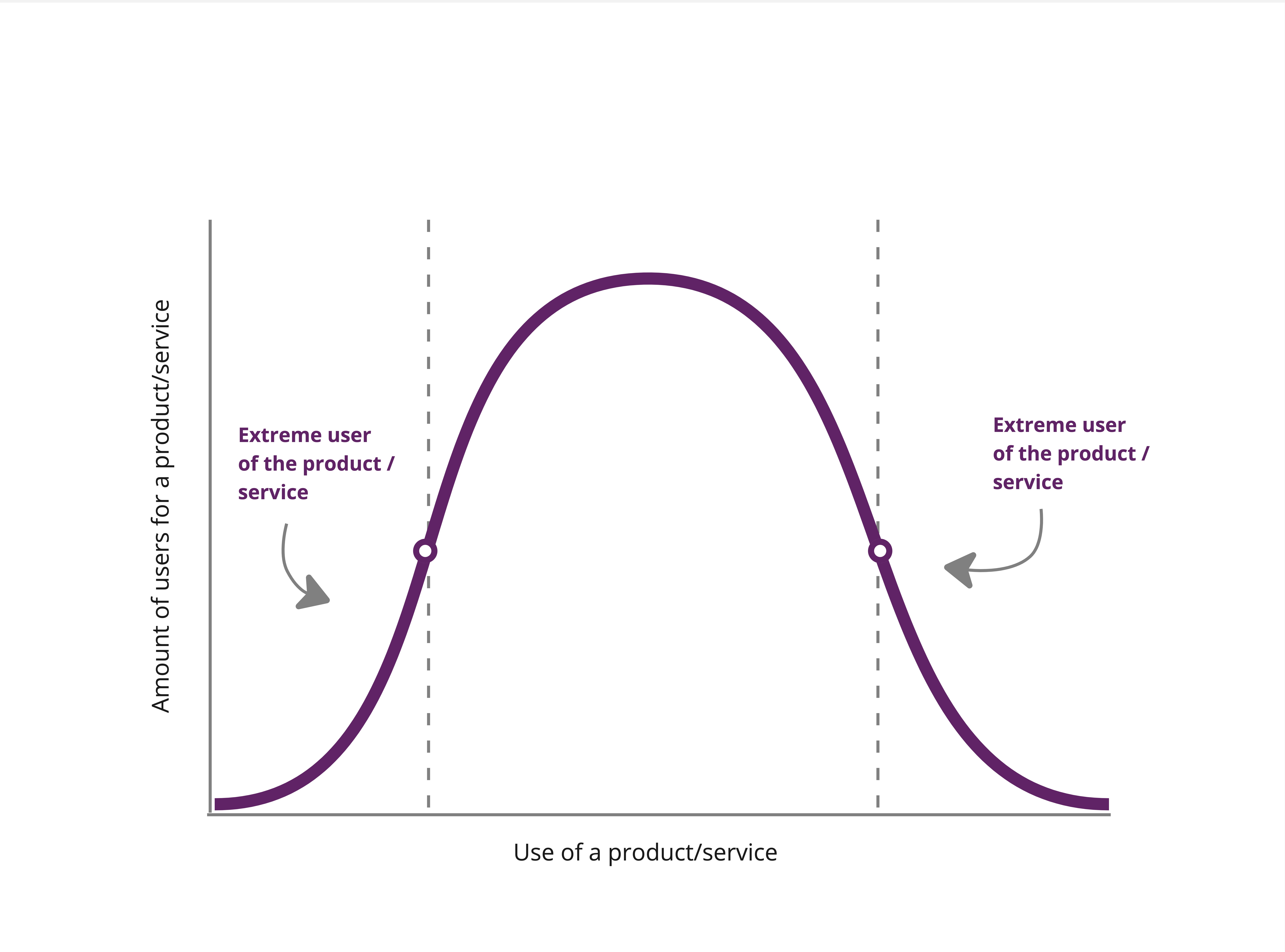Personas
Personas are a tool that represents your service users by describing their backgrounds, beliefs, needs and motivations.
The personas are created based on common characteristics of certain people who are similar to each other, which makes the personas archetypes.
What is a persona?
Personas are a tool often used in design research. They are a great tool to synthesise information about the service users, steer the conversation and move on to the next phase of your project.
Personas should always be informed by research and data analysis.
The personas are created based on common characteristics of certain people who are similar to each other, which makes the personas archetypes. You should aim to collect both quantitative and qualitative data that can help you identify patterns, trends, and segments among your users.
Why use personas?
People's lives are complex and intricate and, if done rightly, personas are a great tool to help build empathy between stakeholders and service users.
They can also act as boundary objects to steer conversations between teams and stakeholders.
When to use personas
Personas should always be informed by research and data analysis.
They are a great tool to synthesize information about the service users, steer the conversation and move on to the next phase of your project.
How to build personas
1. Gather data available
Think about all the data points/sources you might have available that can help build a better understanding of your service user and increase the reliability of the personas. It could either be:
- Nationwide or local wide statistics
- Analysis of a number of random cases
- Available internal data (could be surveys, analytics or existing research)
- Available data from partners
2. Schedule and conduct user interviews with experts and users
To understand the people you are designing for and build representative personas, directly talking to your users is the best approach considering you'll get first-hand insights into their circumstances, motivations and needs.
Another way to get insight about your users is to speak to service experts. They are people in your organisation who are in daily contact with users and can be an advocate for their situation and needs.
3. Triangulate qualitative and quantitative data
With both your quantitative and qualitative data gathered and coded, you will need to spend time coding and clustering as a way of organising data. Then you’ll need to start triangulating the available data and analysing it.
There are different tools you can use to organise and analyse your data. We have used spreadsheets and Miro to work collaboratively when building our service personas.
4. Identify patterns and begin uncovering our personas
When all your data is organised you’ll be able to find patterns and begin uncovering your personas. You're looking for things that the data or the people you've interviewed have in common. These may be patterns of psychological traits, their desires, their favourite activity, personal goals, things they find difficult.
Example: 50% of the people you interviewed mentioned they “fear losing custody of their child”, so half of the personas you create should mention that they have children and that this is their biggest fear.
5. Create your personas
Once you feel confident you have a set of representative personas, you can start developing them. Make sure to include all the needed information to build an accurate picture of who the person is, what they are motivated by, their beliefs and needs.
In essence, try to capture the complexity of their lives so people in your organisation can design services that work for your personas.
6. Test and share your personas
After you create your personas, you need to validate and refine them to make sure they are accurate, relevant, and useful. You can do this by testing your personas with real users, stakeholders, or experts, and getting feedback on whether they reflect the reality and needs of your target users.
Persona's Do's and Don'ts

Extreme personas
Extreme personas are archetypes of people with specific characteristics and representing rare or special groups.
Extreme personas are the people at both ends of the spectrum of a product or service user. The extremes differ because they have particular, unique, specific needs or behaviours compared to the average users, who instead present the most frequent and common needs.
When to create extreme personas
Identifying which user can be defined as extreme first depends on the preliminary identification of the context, but also on the service we're trying to improve and the design challenge. In other words, we start from the averages to identify the extremes.

Example:
When thinking about digital services, examples of extreme personas could be a digital illiterate on one side — i.e. someone who doesn’t know or use the laptop and its functionalities — and on the other one a tech-savvy adult who always keeps up with new technologies and is the first to experiment with them.
Example from practice
DTTO Personas
At Healthcare Improvement Scotland we have developed 5 representative personas who use the Drug Testing and Treatment Order (DTTO) service. The personas were created in order to synthesise data and findings from user research and were widely shared across the organisation in order to inform the improvement of the DTTO Service.
